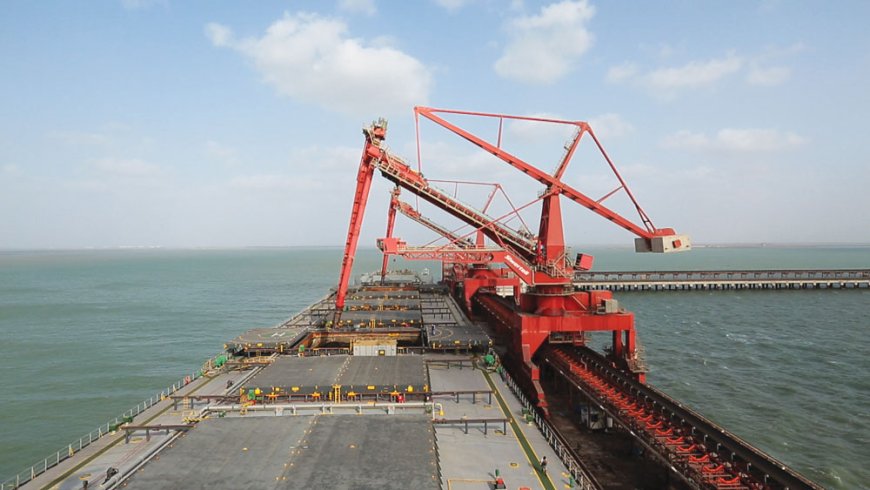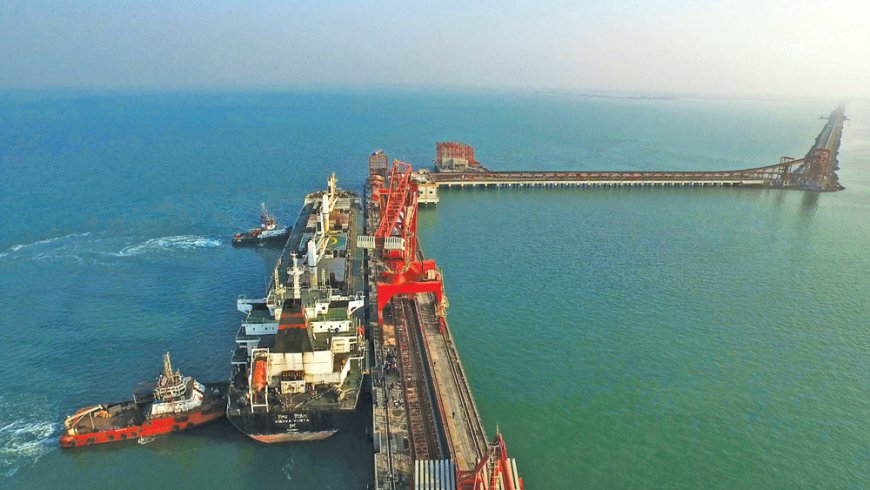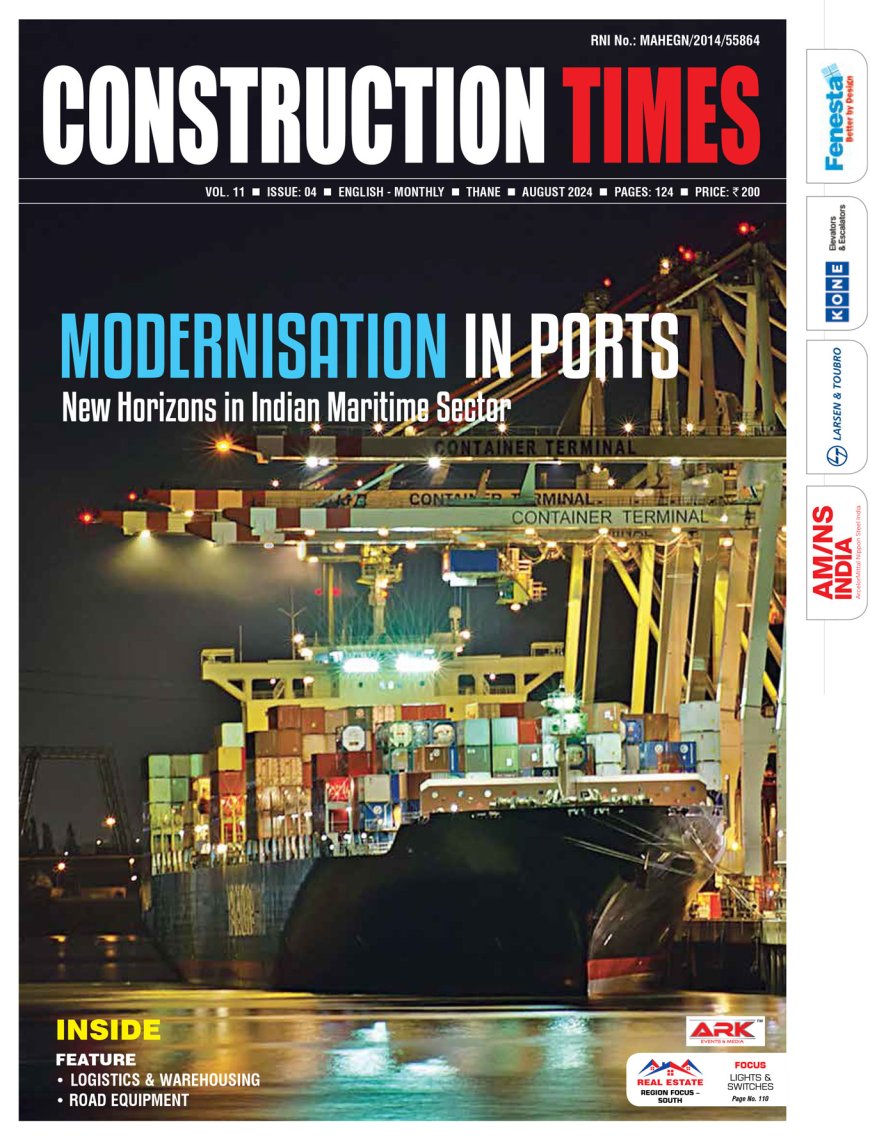Indian ports sector has undergone remarkable advancements in recent years.

Rajiv Agarwal, CEO & MD, Essar Ports
How do you view the performance of Indian ports sector last year? How are you experiencing the progress this year?
Ports infrastructure investments particularly have a significant influence on a nation’s GDP and its EXIM competitiveness. During FY 24, on all India basis, Indian ports handled ~1,539 MMT of cargo registering a growth of ~7% where the Indian Major Ports registered a growth of ~4% and non-Major Ports registered a growth of ~11% in FY 24. Last year, Essar Ports saw divestment of its 24 MMTPA Vizag Terminal and the company is now focused on enhancing capacity and utilization of existing infrastructures, continue to offer multimodal efficient logistics solutions and ensuring sustainable advantage for our customers.
What is your overview of Indian ports improving their performance on a global level?
Indian ports sector has undergone remarkable advancements in recent years, witnessing significant improvements in both infrastructure and efficiency in operations. The implementation of mechanisation, automation, and state-of-the-art technologies have led to a substantial increase in operational efficiency, resulting in streamlined cargo handling processes and reduced turnaround times.
Infrastructure development projects, such as the Sagarmala Program, have played a pivotal role in reducing logistics costs. India’s improved position in the World Bank’s Logistics Performance Index is a testament to the concerted efforts made by the government and industry stakeholders in strengthening the Indian ports sector. This recognition highlights India’s enhanced competitiveness in the global market, opening up new opportunities for trade & economic growth making it an attractive destination for manufacturing and services. Indian Government has unveiled Vision 2047 - a comprehensive roadmap for maritime transformation over next 25 years enabling India’s leap towards a global maritime hub. The objective of it being reduction in business cost, reduce environmental degradation, improve logistical efficiency and create jobs.

What are the current challenges in the ports sector?
Port infrastructure development in India faces several noteworthy challenges. Among them are the need to address inadequate last-mile connectivity, congested road and rail networks, enhanced utilization of infrastructure already created and the requirement for substantial investment in port modernisation and expansion projects. The availability of long-term, low-cost financing options and the streamlining of regulatory procedures are also crucial aspects that need attention. Additionally, efficient land acquisition processes and timely environmental clearances are vital to avoid unnecessary delays.
Successfully addressing these challenges requires a collaborative approach involving government bodies and private sector. This needs to be supplemented with streamlined approval mechanisms to expedite infrastructure development and promote sustainable growth in the sector.
What is the contribution of private ports in India’s maritime business? Can you elaborate on Essar Ports initiatives over the years?
Over the years, private sector and PPPs have played a pivotal role in the modernisation and improving efficiency, thereby supplementing growth of the sector. Having worked at both PPPs in Major Ports and privately-owned ports (kind of PPP in states), in my opinion, PPPs have significantly supplemented the efforts of Government of India over the years. Essar Ports has been a pioneer in offering multimodal logistics solutions across its facilities, be it coastal shipping, industry integrated conveyor and pipeline solutions, vendor managed stockyard solutions and rail movement. This has resulted in offering best of class services which can be benchmarked across the globe. Over the years, Essar Ports has developed 168 MMTPA ports capacity in India through investments in excess of USD 1.5 billion with technology and automation at core. Private players have been instrumental in development of greenfield ports across India. Essar has developed three greenfield ports with a combined capacity of 128 MMTPA across Hazira, Vadinar and Salaya.

What are the latest modernisation/expansion initiatives at your ports and facilities?
Essar has successfully developed and divested 148 MMTPA port capacity in India and the ports business is now focused on:
Enhancing capacity & utilization of existing infra
Continue to provide efficient logistics solutions for customers
Diversifying to clean cargo: Handling containers, unit & green energy vectors
Green transportation of cargo: Mechanized facilities with conveyors and LNG powered fleet of trucks to move cargo
Developing next-generation green port infrastructure
Providing shore power: reducing maritime emissions from ships in the Ports
Essar has plans to expand its 20 MMTPA Salaya Port and develop it as a next gen green port with an increased capacity of 50 MMTPA.
What is the Mission 2025 for your port operations and business excellence?
20 MMTPA Salaya Port is all-weather direct berthing port in southern part of Gulf of Kutch with environment friendly state-of-the-art material handling facilities. With rich hinterland and planned rail connectivity the port is expected to get a boost for diversifying cargo. The Port is planned to leverage on multimodal logistics solutions which will enhance capacity utilization. Under Essar’s Energy Transition initiative port will focus on handling cargo efficiently and eco-friendly manner, adopting renewable energy and providing value added services thereby ensuring sustainable advantage to customers.















